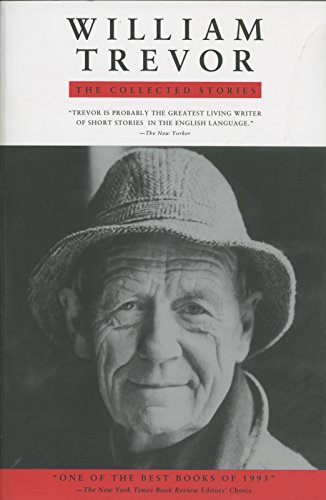“Honeymoon in Tramore” is a simple one, but it’s the kind of simplicity only a fully mature writer is capable of. It feels like a compressed, almost shorthand 10-page version of the 20-to-25-page monster we’ve encountered several times before. (I mean this in an entirely good way.)
We meet the Flannery O’Connor-esquely named Davy Toome and the mononymic Kitty as they enter the inn in Tramore, County Waterford, where they’re spending their honeymoon, in the year 1948. The story slowly reveals their circumstances: Kitty is pregnant by another man, Davy is the orphaned farm laborer on her family’s farm who has been promoted by marrying the only heir to the land. He accompanied her to an abortionist’s in Cork, but she changed her mind, and the family gratefully accepted his taking her on (as, it is implied, no one else would).
The revelation in the story, after Kitty has gotten ill from drinking many bottles of stout, is that the putative father of her child is not the man Kitty has claimed, the unknown cousin of a local priest, but rather Coddy Donnegan, who had been courting Kitty, who rejected her after knocking her up. This is a rather small bit of insight, but the implication is that at last Davy fully understands the situation: that he only has Kitty (and her future land) because she has no other options. After she vomits and passes out, he is gentle and tender with her, thinking that she will continue to tell the story of the mysterious cousin, and that “it was natural she should do so since she had gained less than he had from their marriage.”
Davy Toome is an interesting character in the Trevoeuvre: in his retiring and elliptical presence, he feels in many ways like one of Trevor’s first person narrators. Davy was taken on by Kitty’s family at 15, plucked from the orphanage because he might be fit for farm labor and because Kitty’s family has suffered the loss of all three brothers. For nearly 20 years he worked without complaint, with the status of a menial, and now he almost can’t believe his fortune at sitting beside this “big handsome girl” he has admired since his youth. He is a man without expectations, family, or prospects—as we are told as he lies beside Kitty, caressing her:
He had come to the farm with a label around his neck; he had come out of nowhere, from rooms and corridors that were as bleakly anonymous as the orphan home’s foundling inmates. He had been known as her father’s hired man, but now he would be known as her husband.
Because he has no expectations, he has no illusions. Davy’s pastlessness and near-egolessness is the positive (if one can call it that) side of a coin rubbed down to a smooth surface by Trevor in this story. The characters in Trevor’s stories never have many options or hope of escape from the lives in which they are trapped, but they do have hope in the form of illusions, which are the surviving vestige of a life they perhaps once glimpsed or imagined—they are the final thing they must cling to, and the final thing that Trevor often takes from them, leaving his characters in a place that is utterly lonely and bereft. Davy Toome begins his life in such a place and lives there until he is nearly an adult, and as such he has a strange power and imperviousness.
We understand, too, the other side of that terrible coin, that Kitty is the one whose hopes have been taken, and that drinking to excess on her honeymoon night is her response to realizing, on some level, that this is and will be her life. Davy Toome does not seem bad; he is, in fact, tender and sweet with his new bride, and untroubled by the prospect of raising another man’s son. But Coddy Donnegan represented the possibility of a better, easier life off the farm, and that has been taken away. As Kitty muses, she will continue to tell a story in which she was impregnated by a mysterious priest-to-be and subsequently rejected Coddy, because it is a story that provides her some agency. Kitty would typically be the focal character in a Trevor story, and it is a small mature masterstroke to make Davy the protagonist; “Honeymoon in Tramore” is, in fact, an inversion of “The Ballroom of Romance,” in which the main character Bridie must come to terms with her dismal future with Bowser Egan. Here, Trevor merely gestures at Kitty’s disappointment, but we understand it well enough—in the intervening 50 or so stories, Trevor has taught us well enough how to read him.









